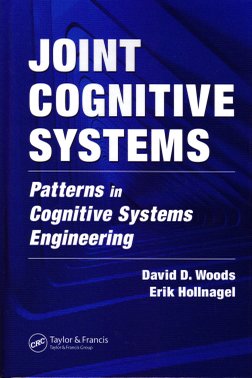
Copyright © Erik Hollnagel 2016
All Rights Reserved.

(2005). Woods, D. D. & Hollnagel, E. (2006). Joint cognitive systems: Patterns in cognitive systems engineering. Boca Raton, FL: CRC Press / Taylor & Francis.
Preface
The gadget-minded people often have the illusion that a highly automatized world will make smaller claims on human ingenuity than does the present one ... This is palpably false.
NorbertWiener, 1964, p. 63
For almost 25 years, Cognitive Systems Engineering (CSE) has searched out and listened to stories of claims on human ingenuity as fields of practice have changed and adapted to new pressures, new devices, and new opportunities. In these stories, change challenged how activities are coordinated, how systems are resilient at boundaries, and how artifacts provide affordances.
This meant we could complement the previous book on joint cognitive systems, which focused on the foundational concepts, with a book that used stories of cycles of complexity and coping to show the main values, concepts and approaches of CSE in action. This book provides a way to look at our collective progress. The general storylines make up a base of findings and patterns that can be used to launch new studies of work, to project the effects of new rounds of change, to search out promising directions for innovating support. Ironically, thinking about representing a research base as a set of abstract narratives is in itself an exploration of how to support and enhance sharing technical, scientific and design information. The stories told here are about more than the sharp end of practice. In parallel, each story tells another tale—revealing gaps and deficiencies in stories we tell ourselves about our relationship with technology, about how we accomplish our goals, and how our systems are vulnerable to breakdown. Acting in roles as researchers or designers or managers does not grant us any immunity from the processes and difficulties of coping with complexities.
One theme running through this volume is—surprise—that action is oriented to the future, anticipating or being prepared for what comes next. This book is intended to provide a start on a pattern base to help us be prepared to be surprised:
- As we observe joint systems at work in cycles of change and adaptation to come,
- As we envision with others how joint systems will work given new pressures and opportunities, and
- As we reflect on and revise our beliefs about work as one of the set of stakeholders whose beliefs support or hobble joint systems as they work.
David D.Woods & Erik Hollnagel